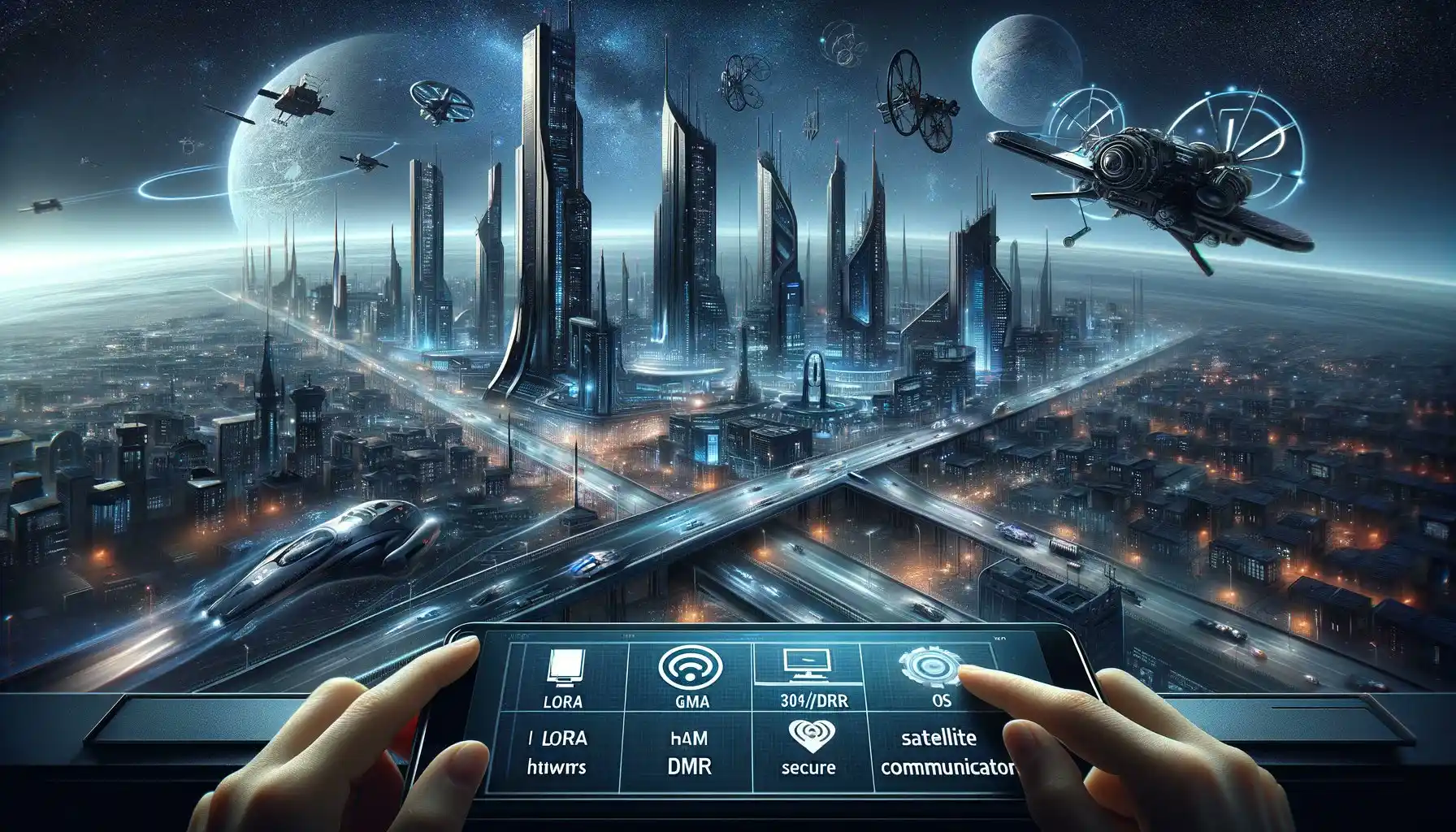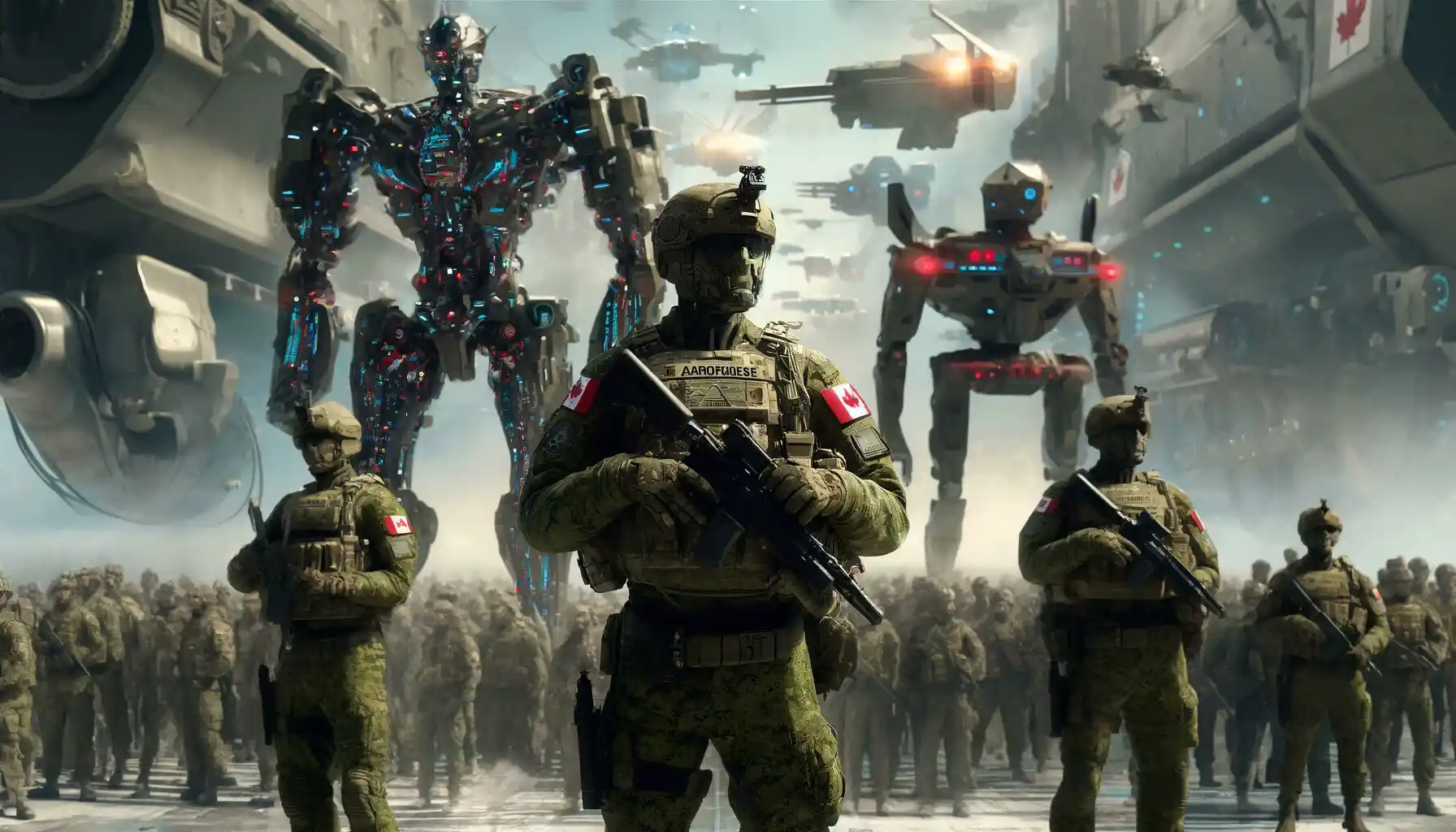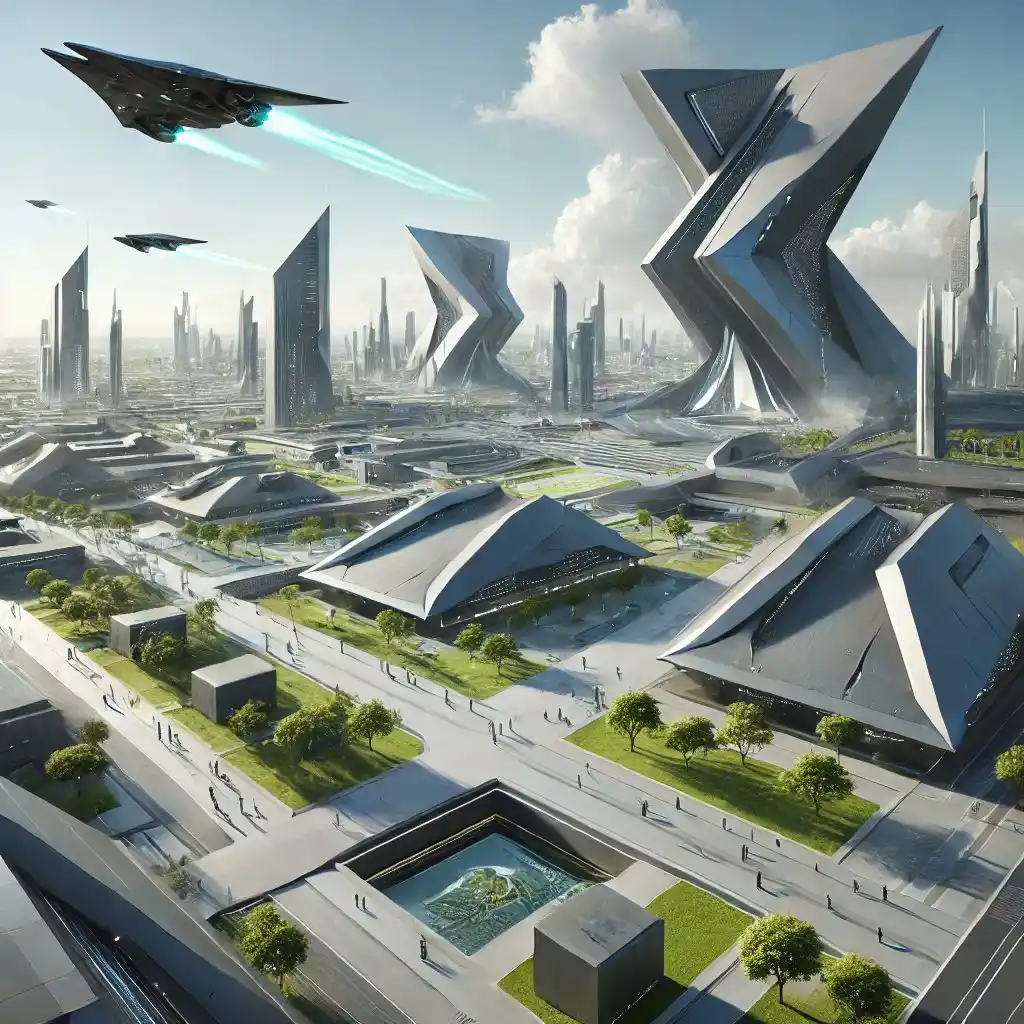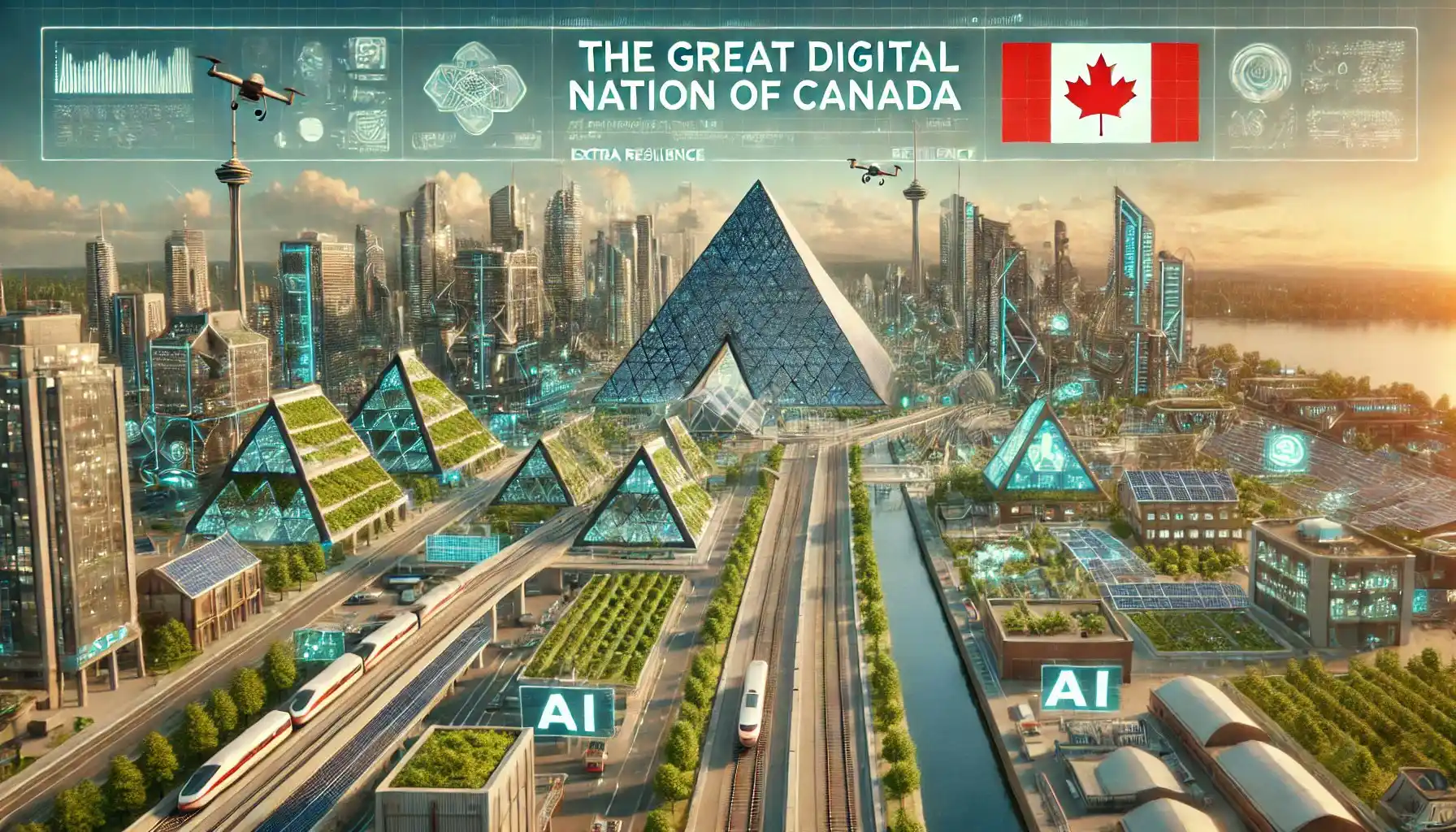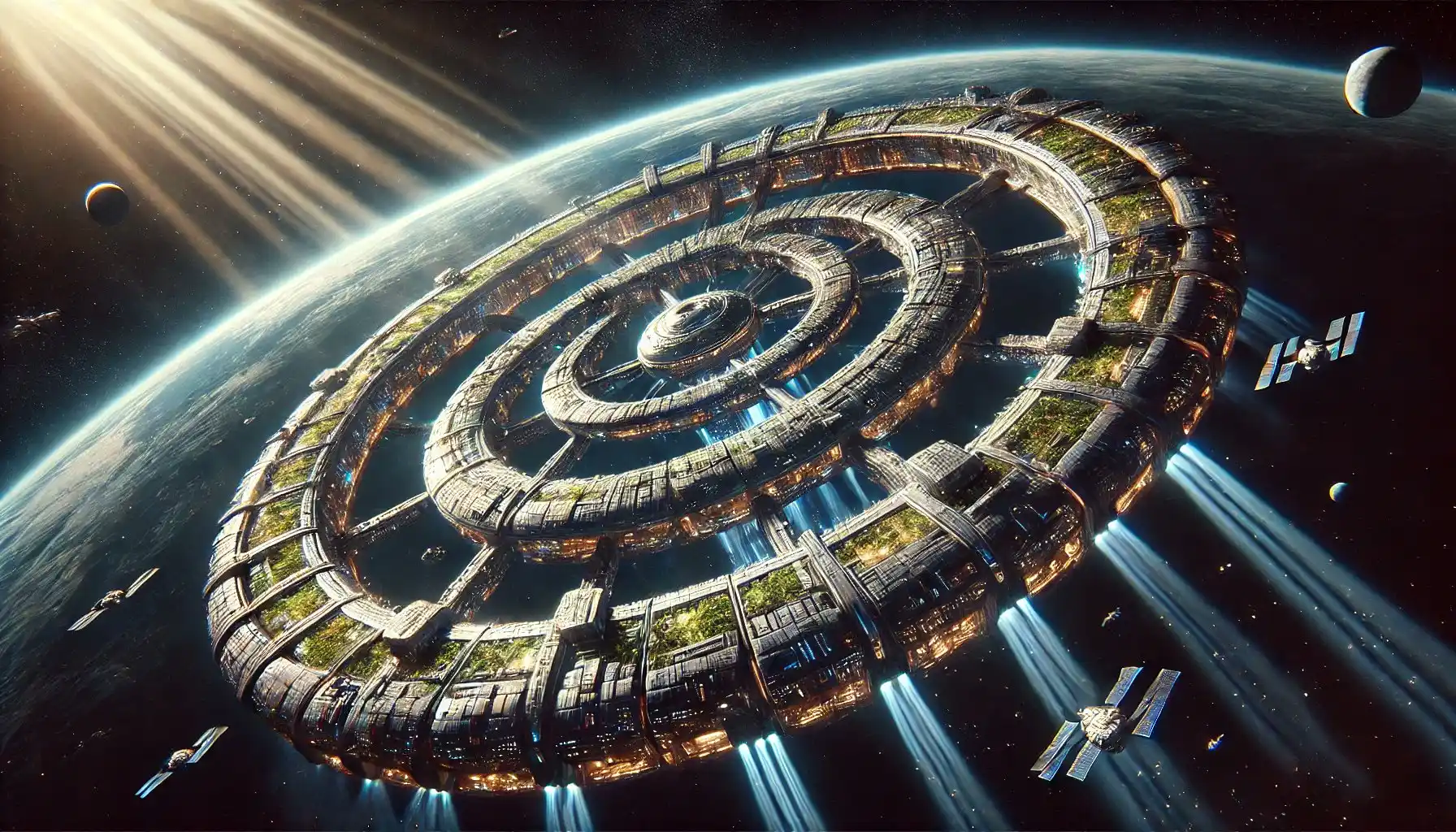Introduction
Strategic Actions
1. Develop Advanced Cognitive and Technological Skills (Scientific Leadership)
Action Steps:
-
Enroll in specialized courses and certifications.
-
Participate in workshops, seminars, and hackathons.
-
Engage in continuous learning through online platforms (Udemy, CompTIA, British Computer Society, NVIDIA, Google, Microsoft, IBM, edX, Coursera, Skills Gap Trainer, Project Management Institute, International Business Analysis Institute, Linux Professional Institute…) and academic institutions that teach “Science, Technology, Engineering, and Mathematics” (STEM).
-
Collaborate with experts and join professional organizations and professional societies, such as “Applied Science Technologists & Technicians of BC” (ASTTBC), Association of Science and Engineering Technology Professionals of Alberta (ASET),”Canadian Information Processing Society” (CIPS) and “Engineers and Geoscientists BC”.
2. Establish Decentralized and Resilient Communication Networks (Civilian Leadership)
Action Steps:
-
Adopt decentralized communication tools that are peer to peer and decentralized, without a central server that an app like Signal (Signal is a good first level starting point) and adopt secure blockchain-based platforms as they evolve. and mature as larger networks.
-
Encourage the use of end-to-end encryption in all forms of digital communication.
-
Develop community-based communication networks that operate independently of centralized infrastructures.
-
Train individuals in digital security and privacy best practices.
3. Foster Global Alliances and Collaborative Networks (Cultural Leadership)
Action Steps:
-
Participate in global forums and conferences focused on resilience and security.
-
Establish partnerships with international NGOs and think tanks.
-
Promote cross-cultural understanding and cooperation through exchange programs.
-
Create platforms for international collaboration on research and development projects.
4. Invest in Autonomous and Sustainable Infrastructure (Civilian Leadership)
-
Invest in renewable energy projects like solar, wind, and hydroelectric power.
-
Develop and deploy EMP-hardened infrastructure to protect against electromagnetic attacks.
-
Promote the adoption of autonomous agricultural systems and urban farming. (also EMP-hardened)
-
Strengthen local supply chains to reduce reliance on global logistics networks.
5. Promote Ethical AI Development and Alignment (Scientific Leadership)
Action Steps:
-
Participate in the development of AI ethics guidelines and standards.
-
Support organizations that promote responsible AI research.
-
Advocate for legislation that enforces ethical AI deployment.
-
Conduct and publish research on AI alignment and safety.
6. Enhance Physical and Cyber Defense Mechanisms (Military Leadership)
Action Steps:
-
Deploy advanced surveillance and defense systems.
-
Conduct regular cybersecurity audits and vulnerability assessments.
-
Train personnel in both physical and cyber defense tactics.
-
Develop and implement incident response plans for potential attacks.
7. Cultivate a Unified Global Consciousness and Purpose (Spiritual Leadership)
Action Steps:
-
Organize and participate in global consciousness-raising events.
-
Promote cross-cultural and interfaith dialogues.
-
Support projects that emphasize global solidarity and mutual aid.
-
Encourage educational programs that highlight the importance of global unity.
8. Support Space Exploration and Colonization Efforts (Scientific Leadership)
Action Steps:
-
Support funding for space agencies and private space companies.
-
Promote research on sustainable life support systems for space habitats.
-
Encourage international collaboration on space missions.
-
Develop infrastructure for space colonization, such as habitats and transportation systems.
For Elon & his Team(s): SPACE TRIP II [ Chillwave – Synthwave – Retrowave Mix https://youtu.be/WI4-HUn8dFc?feature=shared
9. Engage in Strategic Foresight and Scenario Planning (Civilian Leadership)
Action Steps:
-
Conduct regular scenario planning workshops with experts from various fields.
-
Develop and maintain a comprehensive risk assessment framework.
-
Stay informed about emerging technologies and global trends.
-
Create adaptable response plans that can be quickly implemented in crisis situations.
10. Implement EMP Hardening for Critical Infrastructure (Military Leadership)
Action Steps:
-
Install EMP protection devices on critical infrastructure components.
-
Retrofit existing infrastructure with EMP-hardened materials.
-
Conduct training sessions on EMP response and recovery.
-
Develop standards and regulations for EMP protection in construction and maintenance.
11. Establish Backup Critical Infrastructure (Civilian Leadership)
Action Steps:
-
Build and maintain backup power generation facilities.
-
Establish redundant healthcare facilities and emergency medical services.
-
Implement redundant communication networks for critical operations.
-
Regularly test backup systems to ensure functionality during emergencies.
12. Diversify and Decentralize Power Grids by Region (Civilian Leadership)
Action Steps:
-
Design and implement regional power grids with independent energy sources.
-
Invest in localized renewable energy projects to support each regional grid.
-
Develop contingency plans for regional grid failures.
-
Promote regional cooperation and resource sharing to enhance grid stability.
13. Implement Regional Supply Chains for Five Regions of Earth (Civilian Leadership)
Action Steps:
-
Identify and develop key industries for each regional supply chain.
-
Invest in local manufacturing and production capabilities.
-
Establish logistics networks that support regional independence.
-
Encourage businesses to adopt regional supply chain strategies.
14. Advocate for Decentralized Nations Tied by Common Security via Blockchain (Civilian Leadership)
Action Steps:
-
Develop blockchain-based governance frameworks for decentralized nations.
-
Implement secure and transparent transaction systems using blockchain.
-
Promote interoperability between blockchain systems of different regions.
-
Educate policymakers and stakeholders on the benefits of blockchain for decentralized governance.
15. Strengthen Humanity’s Abilities Through Free Speech and Tactical Communication (Civilian Leadership)
Action Steps:
-
Develop and deploy AI tools to detect and counter misinformation.
-
Promote platforms that facilitate open and honest communication.
-
Educate the public on media literacy and critical thinking skills.
-
Implement protocols for rapid information dissemination during crises.
16. Master STEM Disciplines and Develop Advanced Protective Armour Systems (Scientific Leadership)
Action Steps:
-
Expand STEM curricula in educational institutions to cover a broad range of disciplines.
-
Encourage interdisciplinary research and collaboration across STEM fields.
-
Invest in the development of advanced materials and robotics technologies.
-
Support innovation hubs and incubators that focus on protective technologies.
17. Implement Modular and Decentralized Governance Systems, miniX Digital Nation State Governance Systems to bridge to the main X Bridge OS at Elon HQ in Texas (Civilian Leadership)
Action Steps:
-
Develop modular governance frameworks that can be customized for different regions.
-
Promote the adoption of decentralized decision-making processes.
-
Implement technology platforms that support modular governance structures.
-
Train government officials in the principles and practices of decentralized governance.
18. Develop and Utilize Advanced Protective Technologies (Scientific and Military Leadership)
Action Steps:
-
Allocate funding for research in advanced protective technologies.
-
Partner with tech companies and research institutions to develop innovative solutions.
-
Conduct field tests and simulations to evaluate the effectiveness of new technologies.
-
Integrate advanced protective technologies into public and military infrastructure.
19. Enhance Public Awareness and Education on Existential Risks (Cultural Leadership)
Action Steps:
-
Launch national and international awareness campaigns on existential risks.
-
Incorporate existential risk education into school curricula and public seminars.
-
Utilize media platforms to disseminate information on potential threats and preparedness strategies.
-
Encourage community involvement in resilience-building activities and discussions.
20. Leverage Handheld On-Device AI for Real-Time Decision Making and Crisis Management (Scientific and Civilian Leadership)
Action Steps:
-
Develop and deploy handheld AI devices for use in emergency situations.
-
Integrate AI systems into national and local emergency response protocols.
-
Train emergency responders and government officials in the use of AI-driven decision-making tools.
-
Ensure the reliability and security of AI systems to prevent misuse or malfunction during crises.
21. Establish Resilient, Self-Sustaining Agricultural Systems (Civilian and Scientific Leadership)
-
Evolutionary Advantage: A large population engaged in diverse agricultural practices fosters strength, adaptability, health, family cohesion, and is essential for long-term survival and evolution as a counterweight to technical mindsets. This helps protect large family starts, growth, mental health of rural nourishment mindset and life affirming mindset, evolution and lowers carbon output of planet
-
Defense Against Collapse: Independent farms act as decentralized hubs of food production, reducing reliance on centralized technological centres like cities and centralized financial systems and centralized urban city-directed political systems. In the event of technological collapse, economic collapse, or political disruption, these independent farms and rural governance centres can ensure continuous food supply and basic societal functions.
-
Economic Sustainability: Self-sustaining farms contribute to economic stability by providing essential resources, reducing the impact of economic downturns, and promoting local economies. They do not add to the total global debt load that is added when a farmer enters a city in Canada and requires a 1 million dollar mortgage and a minimum of 100 000 annual income dependence in perpetuity just to live and survive.
-
Cultural and Biological Preservation: Maintaining strong rural communities preserves cultural heritage, promotes biodiversity, and ensures a balanced relationship between humanity and the Earth, anchoring intelligence to the Earth as per the main lesson in the Bible dealing with the “Tree of Life.”
-
Resilience and Redundancy: Independent farms enhance societal resilience by offering redundancy in food production and resource management, ensuring that local and global crises do not lead to widespread famine or resource shortages.
Action Steps:
-
Promote Comprehensive Agricultural Education: Invest in education programs that emphasize sustainable farming practices, agroecology, and technological integration in agriculture.
-
Support Small and Medium Farms: Provide financial incentives, resources, and technological support to small and medium-sized farms to enhance their resilience and productivity.
-
Implement Decentralized Agricultural Technologies: Utilize technologies such as vertical farming, hydroponics, and autonomous farming equipment to increase efficiency and sustainability.
-
Encourage Community-Based Agriculture: Foster community-supported agriculture (CSA) initiatives and cooperative farming models to strengthen local food systems and community bonds. Especially in non sustainable city that are dense and that will get wiped out during any conflict, due to famine from disabled electrical grid (EMP strikes).
-
Integrate Farming with Technological Advancements: Develop and deploy advanced technologies like AI-driven crop management, drone-assisted farming, and blockchain-based supply chain management to enhance agricultural productivity and resilience. Ensure these systems operate without networking to centralized services for updates or other loopholes that could breach cyber-security.
-
Note: Use better than NSF53 filters to use clean water for crops and animals and people so they do not lose ability to procreate or their strength levels. Ban genetic modification on food and seeds to the maximum extent that it possible to do so, including factory food. Ban processed food and ultra high processed food, lowering percentage from 60% in USA to 6% like in Italy. Without health, it is not possible to defeat super-intelligence or aliens or military forces or WEF or BRICS).
22. Develop Resilient, Manual-Operated Transportation Systems (Scientific and Civilian Leadership)
Ensure Transportation Independence and Resilience
Video: “Lone Wolf McQuade (Best Scene)” https://youtu.be/EQkyi1_l6po?feature=shared
-
Manual Operation with Physical Steering: Equip vehicles with manual steering and operation capabilities, allowing them to function without electronic or AI systems. This ensures that individuals can navigate and utilize transportation regardless of technological disruptions.
-
Fuel Diversity and Independence: Utilize diverse fuel sources such as natural gas, diesel, and gasoline, ensuring that vehicles can operate using readily available fuels without dependence on electric power grids or AI-driven systems.
-
AI Bypass Switches: Integrate AI bypass switches in vehicles, enabling users to switch between AI-assisted and manual operation seamlessly. This ensures that human control is always possible, providing an essential fallback during technological failures.
-
Training and Mastery: Promote training programs that teach individuals how to operate vehicles manually, fostering a deep understanding and mastery of transportation systems without reliance on automated technologies.
-
Sovereign Driving Experience: Encourage the development of transportation systems that prioritize human mastery and sovereignty, ensuring that individuals retain control over their mobility and are not entirely dependent on AI or centralized transportation networks.
Action Steps:
-
Design and Manufacture Manual-Operated Vehicles: Invest in the design and production of vehicles that prioritize manual operation, ensuring they are robust and capable of functioning without electronic or AI systems.
-
Promote Driver Training Programs: Establish training programs that focus on manual driving skills, ensuring that a significant portion of the population is proficient in operating vehicles without AI assistance.
-
Ensure Fuel Availability: Develop infrastructure to support diverse fuel types, ensuring that manual-operated vehicles can access necessary fuels even during supply disruptions.
-
Implement AI Bypass Technologies: Integrate AI bypass switches into vehicle designs, allowing users to maintain control and switch to manual operation when needed.
-
Encourage Community-Based Transportation Solutions: Foster community initiatives that support the use and maintenance of manual-operated transportation systems, ensuring widespread adoption and resilience.
23. Establish Comprehensive Training in Sports Shooting, Military Science, and Police Science (Cultural and Military Leadership)
Empower Individuals with Essential Combat and Emergency Skills
-
Sports Shooting Proficiency: Promote sports shooting as both a recreational and defensive skill, enhancing marksmanship and firearm safety among civilians and law enforcement personnel.
-
Military Theory and Fighting Strategies: Incorporate military theory and fighting strategies into training programs, drawing inspiration from figures like Lucas Botkin to develop tactical proficiency and strategic thinking.
-
Physical Fitness and Athleticism: Emphasize the importance of physical fitness, athleticism, and endurance training to ensure individuals are in optimal condition for emergency response and combat scenarios.
-
Emergency Response Training: Equip individuals with the knowledge and skills necessary to respond to various emergency situations, including natural disasters, civil unrest, and direct threats.
-
Ethical and Legal Education: Integrate ethical considerations and legal frameworks into training to ensure that individuals act responsibly and within the bounds of the law during high-stress situations.
Action Steps:
-
Develop Specialized Training Programs: Create and implement training curricula that focus on shooting proficiency, military tactics, and police operations, tailored to different skill levels and roles.
-
Partner with Military and Law Enforcement Agencies: Collaborate with military and law enforcement organizations to provide authentic training experiences and mentorship opportunities.
-
Host Workshops and Seminars: Organize workshops, seminars, and simulation exercises that allow individuals to practice and refine their combat and emergency response skills in controlled environments.
-
Promote Physical Fitness Initiatives: Encourage participation in physical fitness programs that enhance strength, agility, and endurance, essential for effective emergency response and combat readiness.
-
Integrate Ethical Training Modules: Ensure that all training programs include comprehensive modules on ethics, legal responsibilities, and the moral implications of using force.
24. Equip Sheriffs with anti AI AI Systems for Defense and Enhanced Capability Against AI Threats (Military and Civilian Leadership)
Strengthen Law Enforcement with Advanced AI Capabilities
-
AI-Enhanced Surveillance and Monitoring: Implement AI-driven surveillance systems to monitor and analyze potential threats from AI systems in real-time, providing sheriffs with actionable intelligence on how to destroy any malicious AI in a city.
-
Predictive Policing Technologies: Utilize AI to predict and prevent criminal activities and criminal AI agents by analyzing patterns and trends, enabling proactive law enforcement interventions.
-
Automated Threat Assessment with On-Device Wearable Police AI Systems: Equip sheriffs and law enforcement personnel with localized, on-device, wearable, and personalized AI tools capable of assessing and prioritizing threats based on severity and likelihood.
-
These decentralized AI systems should function independently from central networks at police precinct headquarters, ensuring operational continuity even if the primary precinct’s local AI infrastructure is compromised.
-
By relying on non-networked, field-level AI systems that communicate only through a secure, human-mediated police officer bridge to headquarters, individual officers can maintain control and counteract any potential mainframe takeover attempts of their personal AI units.
-
This layered approach ensures that law enforcement retains autonomy and resilience, and authority over all AI systems, even in scenarios of systemic breaches or centralized AI manipulation.
-
AI-Assisted Decision Making: Provide sheriffs with AI systems that offer decision support during high-stress situations, enhancing their ability to respond swiftly and accurately.
-
Training in AI Interaction: Develop training programs that educate sheriffs on effectively interacting with and managing AI systems, ensuring they can leverage these technologies without becoming dependent on them.
Action Steps:
-
Integrate AI Systems into Law Enforcement: Collaborate with technology providers to incorporate AI tools into sheriff departments, enhancing their operational capabilities.
-
Provide Comprehensive AI Training: Develop and deliver training programs focused on the use and management of AI systems, ensuring sheriffs are proficient in utilizing these technologies.
-
Ensure Data Security and Privacy: Implement robust data security measures to protect the integrity and privacy of the information processed by AI systems in law enforcement.
-
Foster Collaboration Between AI Experts and Law Enforcement: Encourage ongoing collaboration and knowledge exchange between AI specialists and sheriffs to continuously improve AI-driven law enforcement strategies.
-
Monitor and Evaluate AI Integration: Regularly assess the effectiveness and impact of AI systems in law enforcement, making necessary adjustments to optimize performance and address any emerging challenges.
25. Convert All World Governments to Digital Nation States with Corporate-Level Efficiency Using Automation and AI Technologies (Political and Technological Leadership)
Transform Governance Structures for Enhanced Efficiency and Resilience
-
Digital Governance Platforms: Develop and deploy a tiered digital platform architecture that centralizes government operations at the national level, while maintaining decentralized, secure, and scalable networks on a global basis. Initially, each country would operate “miniX” systems, forming a second-level network to the main X bridge OS for the planet. These “miniX” systems would further be divided into localized “nanoX” networks down to the city and community level, creating a third-tier structure. This multilayered system ensures that even at the smallest unit, city-level networks maintain autonomy and flexibility, and maximum representation, maximum governance access and maximum national citizen atuhroity within the system possible, for each component of Earth, no matter how remote.
-
All “miniX” and “nanoX” systems are interconnected through a global “X Bridge OS” — a sophisticated blockchain-of-blockchains model that facilitates secure communication, seamless service delivery, and coordination between the various tiers while preserving the integrity and autonomy of each unit.
-
The “X Quantum Bridge OS” serves as a unified interface, enabling real-time data flow, decision-making, and coordination, maximizing the efficiency of governance across all levels. This framework not only enhances local service delivery but also enables robust global collaboration, effectively harnessing the collective potential of human engagement and innovation. The result is a powerful governance structure that amplifies real-world engagement, fosters resilience, and adapts dynamically to evolving challenges and opportunities on a global scale. When “X Quantum Bridge OS” is cobmined with AI, in this setup, it has the power to amplify thought into real world events and otucomes, such as rapid advanced civiliziation construction.
-
By leveraging the synergy between localized systems and a central coordinating framework, we can accelerate development and foster an environment where the power of human thought is seamlessly translated into actionable, high-impact outcomes for societal advancement. This structure ensures rapid scalability and adaptability, setting the stage for the next phase of global development.
-
Automation of Public Services: Utilize automation technologies to handle routine administrative tasks, allowing government employees to focus on more strategic and citizen-centric roles.
-
AI-Driven Policy Analysis and Decision Making: Deploy AI systems to analyze vast datasets, predict outcomes, and assist in crafting informed policies that address complex societal challenges.
-
Blockchain for Transparent and Secure Transactions: Integrate blockchain technology to ensure transparency, security, and immutability in government transactions, enhancing trust and reducing corruption.
-
Scalable Infrastructure: Design government infrastructures that can scale efficiently to meet growing demands, similar to how corporations like Amazon and Meta manage large user bases with minimal workforce increases.
Example: Canada’s Public Sector vs. Corporate Giants: A Comparative Study of Efficiency and Employee Ratios
-
Public Sector Employees as the Operational Layer: Government employees implement policies and manage day-to-day services such as healthcare, education, and infrastructure. With approximately 4 million public sector employees in Canada (1 employee per 9.75 citizens), the public sector is significantly larger compared to corporate giants.
-
Corporate Structure Ratios: Major corporations like Apple, Meta, and Amazon operate with vastly higher employee-to-customer ratios (e.g., 1 employee per thousands or millions of users) due to their reliance on automation and AI, demonstrating superior scalability and efficiency.
-
Management-to-Employee Ratio: Corporations maintain tighter management structures (1 manager per 8-12 employees) compared to the public sector, facilitating more direct oversight and rapid decision-making.
-
Efficiency and Scale of Operations: Corporations emphasize efficiency and scalability through technology, serving millions of customers with relatively small workforces. In contrast, the public sector remains labor-intensive, often lagging in efficiency despite its size.
Action Steps:
-
Implement Digital Governance Frameworks: Develop and deploy digital frameworks that centralize and streamline governmental operations, leveraging AI and automation to enhance service delivery.
-
Adopt Corporate Management Practices: Integrate management strategies from the corporate sector, such as lean management and agile methodologies, to improve governmental efficiency and responsiveness.
-
Invest in AI and Automation Technologies: Allocate resources to develop and integrate AI and automation solutions across various governmental departments to reduce redundancies and enhance operational efficiency.
-
Promote Transparency and Accountability: Utilize blockchain and other secure technologies to ensure transparent and accountable government transactions, building public trust and reducing corruption.
-
Scale Government Services Efficiently: Design scalable infrastructure solutions that allow governments to expand services without proportionally increasing workforce sizes, mirroring the scalability seen in major corporations.
26. Establish Comprehensive Survival and Emergency Preparedness Systems (Cultural and Civilian Leadership)
Foster a Culture of Emergency Resilience and Self-Sufficiency
-
Emergency Preparedness Education: Educate the public on emergency preparedness, including creating personal pantries, establishing home greenhouses, and learning survival skills.
-
Rural and Low-Density Living: Encourage the development of rural farms as secondary properties or low-density cities to decentralize populations and reduce vulnerability to urban-centric threats.
-
Community-Based Resilience: Support the establishment of small towns and community-based initiatives that focus on self-sufficiency, including local farming, renewable energy, and emergency response training.
-
Greenhouse and Pantry Implementation: Promote the installation of greenhouses at home and community levels to enable year-round food production and reduce reliance on centralized food systems.
-
Emergency Skills Training: Provide training in essential emergency preparedness skills, such as first aid, self-defense, sustainable farming, and resource management.
-
Arming Capabilities: Ensure that individuals and communities have access to arming capabilities for self-defense and protection during crises, while maintaining strict safety and ethical standards.
-
City Re-Development: Transform high-density cities into lower-density environments by integrating green spaces, sustainable infrastructure, and community centers to enhance resilience and reduce the impact of disasters.
Action Steps:
-
Promote Emergency Preparedness Programs: Develop and distribute educational materials and programs that teach individuals how to prepare for emergencies, including building pantries and greenhouses.
-
Support Rural Development Initiatives: Invest in rural and low-density urban development projects that focus on sustainability, self-sufficiency, and community resilience.
-
Encourage Home-Based Agriculture: Provide incentives and resources for individuals to install home greenhouses and engage in small-scale farming, ensuring food security and self-reliance.
-
Host Emergency Training Workshops: Organize workshops and seminars that teach essential emergency skills, including first aid, self-defense, and sustainable farming practices.
-
Implement Community Resilience Plans: Collaborate with local governments and communities to develop and implement resilience plans that include resource management, emergency response protocols, and sustainable living practices.
-
Provide Access to Defensive Tools: Ensure that communities have access to defensive tools and arming capabilities, accompanied by training and safety regulations to promote responsible use.
-
Redesign Urban Spaces for Resilience: Work with urban planners and architects to redesign cities with lower density, integrated green spaces, and resilient infrastructure to better withstand disasters and maintain functionality during crises.
27. Implement a Decentralized, Quantum-Resistant Blockchain Governance System with Universal Software Upgrades (Technological and Civilian Leadership) – The Next Internet
Secure and Transparent Governance Through Advanced Cryptography and Software Integration
Key Components:
-
Quantum-Resistant Cryptography: Utilize advanced cryptographic algorithms impervious to quantum computing attacks, ensuring long-term data security.
-
Hardware Security Keys: Equip each individual on Earth with a unique hardware security key, serving as an analog private key that cannot be easily replicated or compromised.
-
Decentralized Blockchain Networks: Develop blockchain systems that operate on a decentralized architecture, eliminating single points of failure and enhancing resilience against cyber threats.
-
Transparent AI Governance: Manage AI actions and operations through blockchain-based governance structures, ensuring all AI activities are transparent, accountable, permissioned and subject to human oversight.
-
Universal Software Upgrades to Blockchain Standards: Ensure all software running on any computing device is upgraded to comply with the latest blockchain standards, enhancing security and interoperability across platforms.
-
Open-Source, Non-Profit Management: Support open-source projects managed by non-profit organizations to maintain impartiality, foster community trust, and promote collaborative oversight of AI technologies.
Action Steps:
-
Develop Quantum-Resistant Blockchain Protocols: Invest in research and development of blockchain protocols incorporating quantum-resistant cryptographic techniques.
-
Distribute Hardware Security Keys: Provide individuals with hardware security keys to establish a secure and personal method of authentication and identity verification.
-
Upgrade Existing Software Systems: Implement initiatives to upgrade all software on computing devices to the latest blockchain standards, ensuring enhanced security and compatibility with decentralized governance systems.
-
Establish Decentralized Governance Frameworks: Create decentralized governance models on the blockchain that allow communities to oversee and guide AI actions in a permissioned and transparent manner.
-
Promote Open-Source Initiatives: Encourage the development and maintenance of open-source blockchain projects managed by non-profit entities, ensuring governance systems remain accessible and accountable.
-
Integrate AI Oversight Mechanisms: Implement smart contracts and decentralized applications (dApps) that monitor and regulate AI behaviour, ensuring compliance with ethical standards and human oversight.
-
Educate the Public on Blockchain and Cryptography: Launch educational campaigns to inform individuals about the importance of blockchain technology, quantum-resistant cryptography, and the role of hardware security keys in maintaining digital sovereignty.
-
Foster Global Collaboration: Collaborate with international organizations, governments, and tech communities to standardize blockchain governance practices and promote widespread adoption of secure, decentralized systems.
-
Ensure Accessibility and Inclusivity: Design blockchain systems and software upgrades to be user-friendly and accessible to all individuals, regardless of technical expertise, maximizing participation and security.
Benefits:
-
Enhanced Cybersecurity: Quantum-resistant cryptography and decentralized networks provide robust protection against hacking, data breaches, and other cyber threats.
-
Decentralized Control: Eliminates reliance on centralized authorities, reducing the risk of single points of failure and enhancing system resilience.
-
Transparent AI Management: Ensures that AI operations are open to public scrutiny and governed by ethical standards, preventing misuse and maintaining human oversight.
-
Empowered Individuals: Hardware security keys and upgraded software grant individuals control over their digital identities and data, fostering greater personal autonomy and security. It would be difficult for an AI to find the hardware keys of 10 billion humans, without being noticed, to compromise the system.
-
Community Trust: Open-source, non-profit management of blockchain systems builds trust and encourages collaborative governance, aligning technological advancements with human values.
Conclusion
References
-
Statistics Canada. “Canada’s Population Estimates, Second Quarter 2023.”
-
Government of Canada. “Population of the Federal Public Service, 2023.”
-
Fraser Institute. “Comparing Government and Private Sector Compensation in Canada, 2021.”
-
Institute of Public Administration of Canada (IPAC). “Public Sector Employment in Canada.”


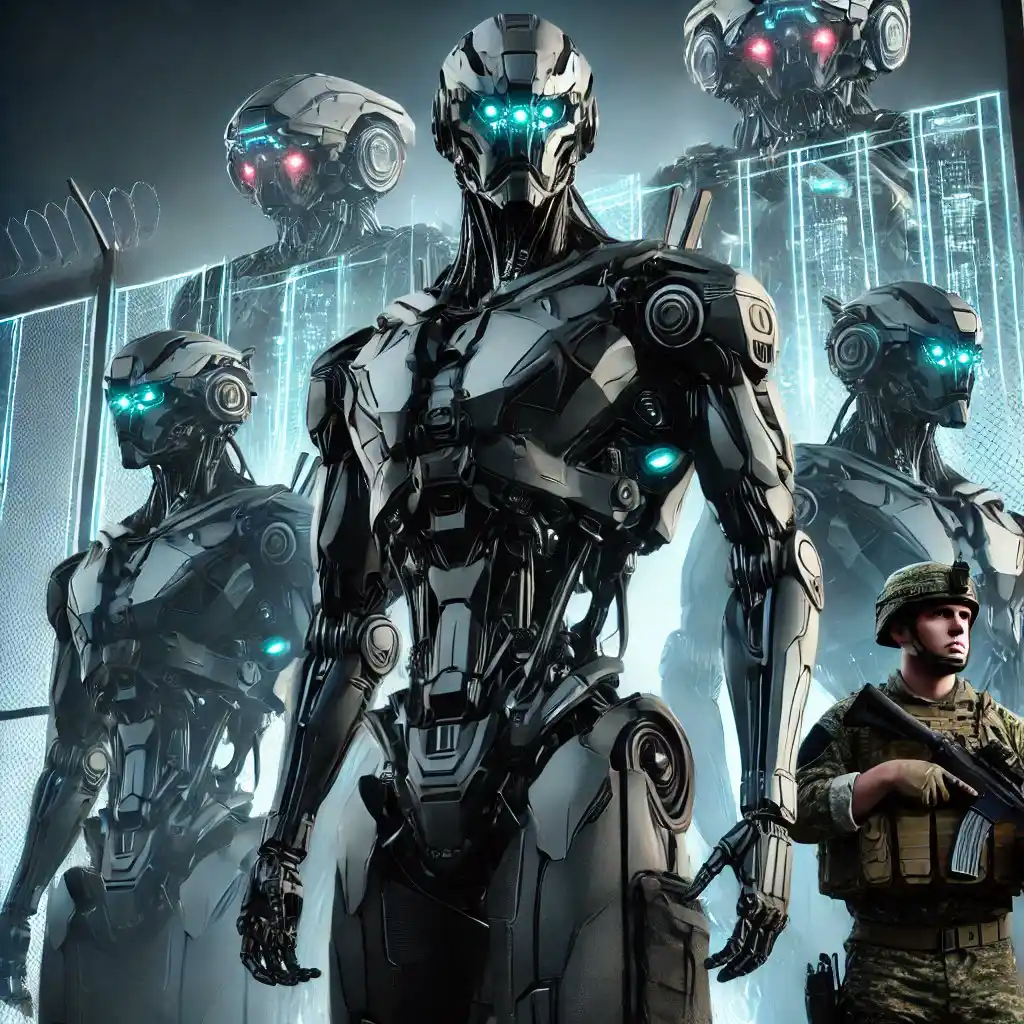



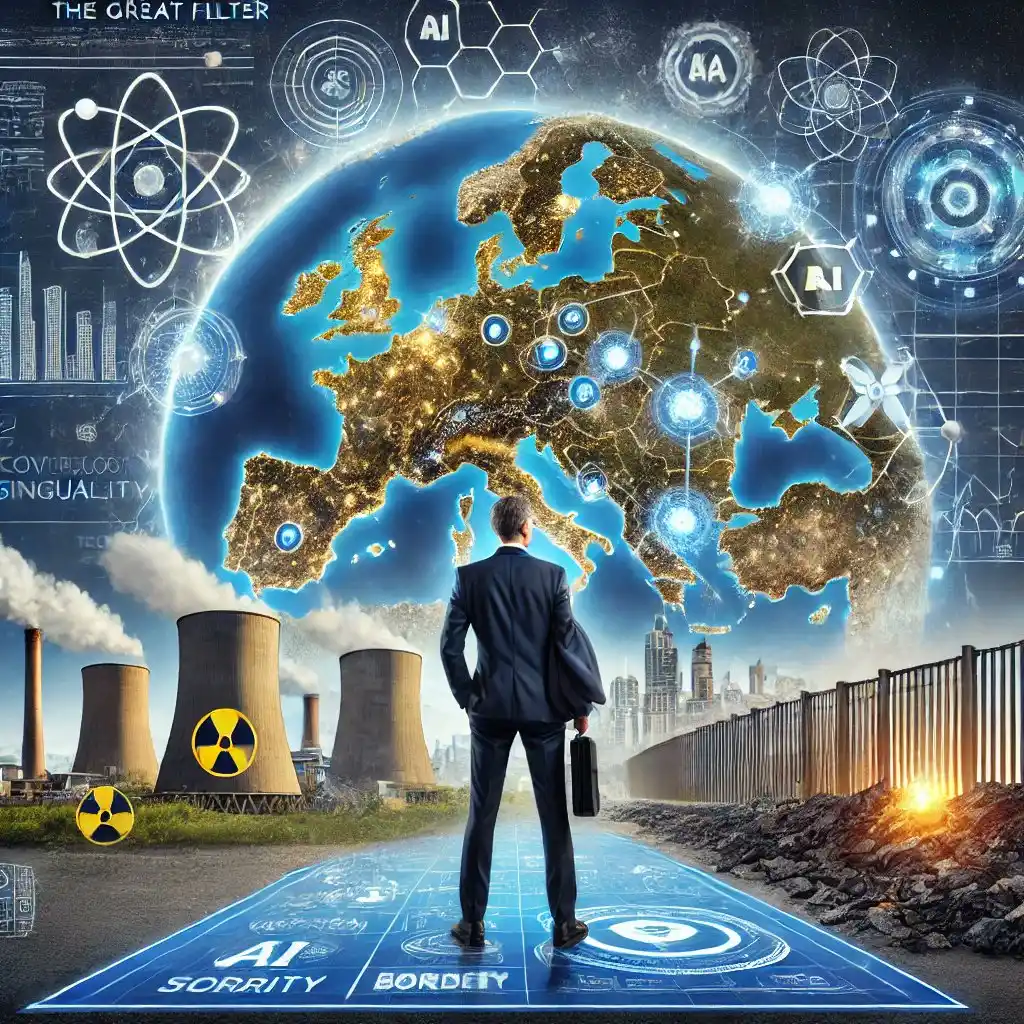




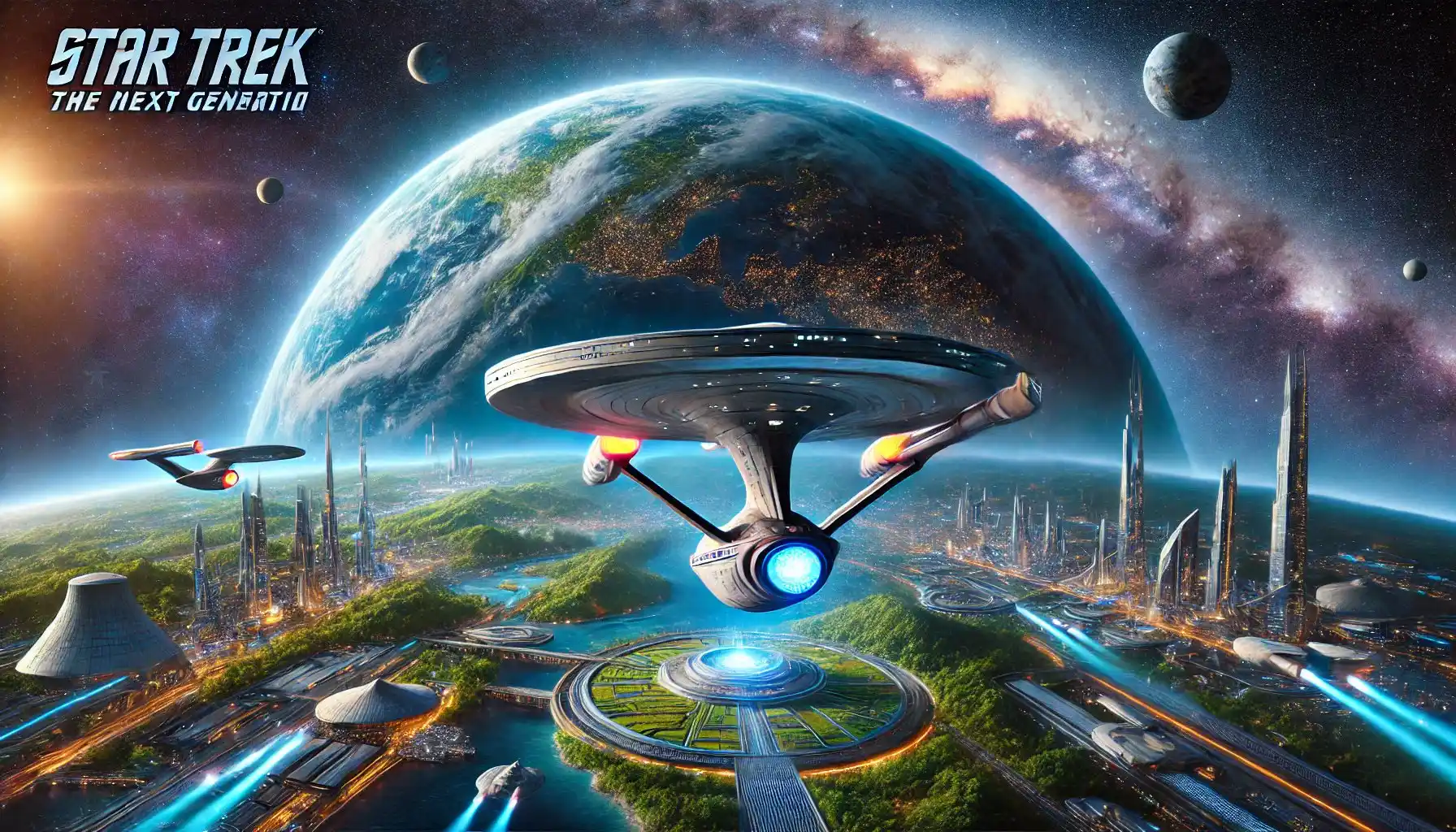
Related Content:
Title: “The Great Partisan Shift | Robert F. Kennedy Jr. | EP 484” https://youtu.be/bKniGfvOePc?feature=shared
Title: “Igniting the Flame of Creation: Reaffirming Marriage as a Sacred Union of Souls” https://x.com/SkillsGapTrain/status/1839206542651904011
Title:“Holiness in the Age of AI: Achieving Ethical & Spiritual Transcendence with Team SGT” https://x.com/SkillsGapTrain/status/1838096109270429841
Title: “Using Science Fiction Hero Analysis to Realign the Future: Elevating Pierre Poilievre’s Foundational” https://x.com/SkillsGapTrain/status/1837776097313726756
Title: “Preserving the 900 MHz Band: Empowering Communities with LoRa for Resilience & Security” https://x.com/SkillsGapTrain/status/1837029262127198352
Title: “Title: “The Great Schism Revisited: A Path to Spiritual, Philosophical, and Technological Unity, Aiming for Heaven, Not Hell” https://x.com/SkillsGapTrain/status/1834784171291471885
Title: “The Knowledge Singularity in Modern Engineering: Integrating AI, Spirituality, Philosophy, & Ethics” https://x.com/SkillsGapTrain/status/1834246753391948096
Title:“The Evolution of Thought: From the Birth of Islam to Modern Engineering and Philosophy” https://x.com/SkillsGapTrain/status/1833941005382680676
Title: “Brazil’s Leadership in a Decentralized Future: Aligning with Sector 001 for Global Resilience” https://x.com/SkillsGapTrain/status/1833864702360695240
Title: “Sector 001: The Terra Nexus for Humanity’s Resilient & Decentralized Future” https://x.com/SkillsGapTrain/status/1833200645089669186
Title: “Free Speech, Tactical X, & the Modern War Effort: Charting the Course to Public & National Security Resilience” https://x.com/SkillsGapTrain/status/1832430046503371194
Title: “The Inescapable Reality of War: Technology, Power Shifts, & the Lessons of History” https://x.com/SkillsGapTrain/status/1832390420103414058
Title: “Roots of Knowledge: How Religion & Philosophy Shape Moral Foundations in an Era of Ideological Chaos” https://x.com/SkillsGapTrain/status/1831229492544913613
Title:“Canada’s Public Sector vs. Corporate Giants: A Comparative Study of Efficiency and Employee Ratios” https://x.com/SkillsGapTrain/status/1831216630665474467
Title: “Quo Vadis America 2024: A Crossroads Between Revolutionary Change and Foundational Principles” https://x.com/SkillsGapTrain/status/1830722720390377953
Title:“Preparing for the End: Biblical Prophecies, Geopolitical Realities, and the Christian Response” https://x.com/SkillsGapTrain/status/1828822758815347081
Title: “The Open-Source Revolution: Reclaiming Our Future from the AI Elite” https://x.com/SkillsGapTrain/status/1828770882640072996
Title:“Next-Gen Abrams Tank: Revolutionizing Battlefield Dominance with Sequential Firing, Layered Defense, Advanced Composite Armour, Razor Blade Shields, Active Countermeasures, Hybrid Power, Modular Design, and AI Targeting” https://x.com/SkillsGapTrain/status/1826917592822403135
Title:“Transcending Limits: Embracing Nietzsche’s Übermensch in the Age of AI and Powered Assault Armour” https://x.com/SkillsGapTrain/status/1820656729786323323
Title: “Transforming Government Efficiency: A Standardized Approach” https://x.com/SkillsGapTrain/status/1820203345761702093
Title: “Comment for Lex Fridman and Elon Musk on Establishing a “Government Efficiency Commission” https://x.com/SkillsGapTrain/status/1819751611964510220
Title: “Leveraging AI Infrastructure & Open Source LLMs for Public Safety, National Security, Expert & AI Driven Legislation Reviews, & High Efficiency Administrative Systems Optimization”
Title: “Building a Secure & Decentralized Internet: Decentralizing the Internet for Enhanced AI Safety” https://x.com/SkillsGapTrain/status/1814735821804876064
Title: “The Role of Sheriffs and the Disintegration of National Police Functions in Canada” https://x.com/SkillsGapTrain/status/1814632355186790460
Title: “Should Elon Musk Build the Flying Metal Suit of Armour? A Resounding Yes.” https://x.com/SkillsGapTrain/status/1812741316276552174
Title: “Fortifying the Future: Enhancing Canada’s Naval Capabilities in an Era of Advanced AI Warfare” https://x.com/SkillsGapTrain/status/1811537280894665142
Title: “The Sovereign Code: Nigel Farage, Canada’s Rise, and the Blueprint for a Decentralized World” https://x.com/SkillsGapTrain/status/1808785950949945821
Title:“The Pistol: A Silent Guardian Under Siege, A Civilization at the Crossroads” https://x.com/SkillsGapTrain/status/1806509286186537335
Title: “The Rifle and the Soul: Why Shooting Sports Are My Lifeline to Canada” https://x.com/SkillsGapTrain/status/1797835263273521216
Title: @MelissaLantsman “People who speak the truth, justice, professional conduct and especially ethics in today’s world, who describe reality and their environment with the precision of a system engineer, are often met with hostility and online insults from those who are afraid to embrace their better self.”https://x.com/SkillsGapTrain/status/1839785316376555858
Title: “Elon, Grok is a fantastic start. But you know what sets you apart from other billionaires? You’ve always followed your heart, focusing on real-world STEM innovation while the rest of the tech world kept everyone distracted with social media apps and web apps and mobile apps.” https://x.com/SkillsGapTrain/status/1838327434719985851
Title: “Elon, we need a secure phone (secure hardware and secure software)”https://x.com/SkillsGapTrain/status/1836607799696199773
Title: “The Great Filter Ahead: Engineering a Pathway to Complex Civilizational Survival and Overcoming Cosmic Hurdles” https://skillsgaptrainer.com/the-great-filter-ahead-engineering-a-pathway/
Title: “This message to the defense ministers of the Bucharest 9 Initiative (B9)” https://x.com/SkillsGapTrain/status/1835354575408337228
Title: @JeriLRyan @RobertPicardo “This might get us in trouble with Jeri Ryan. Here goes. Thank you, Robert. We are certain Elon Musk appreciates your design review of his future aspirations, and your contribution to make his designs even better.” https://x.com/SkillsGapTrain/status/1828986776414785682
Title: “The Path to Peaceful Coexistence: Charting a Course for Global Democracy and Enhanced Cooperation” https://skillsgaptrainer.com/the-path-to-peaceful-coexistence/
Title: “Safeguarding Existence: The Farmer’s Role in an Era of Smart Cities and AI Dominance” https://skillsgaptrainer.com/safeguarding-existence-the-farmers-role/
Title: @ABDanielleSmith “There’s something you need to hear… Today, history has a message for you because it recognizes you as the eternal guardian of family above family.”https://x.com/SkillsGapTrain/status/1838640070133182798
Title:“Phil Collins, Eric Clapton, Elton John, Lionel Richie, Bee Gees 📀 Soft Rock Ballads 70s, 80s, 90s” (Listen at minute 40) https://youtu.be/3AZtvtxWTSE?feature=shared
Title:“The Evolution of God: Reintroducing Divine Intelligence through Science and Spirituality” https://skillsgaptrainer.com/the-evolution-of-god/
Title:“The Future of AI – Decoding the Fourth Industrial Revolution, Transcending the Borg, Embracing Strong Humanity Through AI, Blockchain and Iron-Man Technologies” https://skillsgaptrainer.com/the-future-of-ai/
Title:“Beyond Warp Speed: The Traveller’s Teachings on Human Potential and the Power of Thought” https://skillsgaptrainer.com/beyond-warp-speed/
Title:“X: The Lens That Focuses Human Thought to Engage, Architect and Build the Next Generation of Human and AI Existence” https://x.com/SkillsGapTrain/status/1813753312681787732
Title: “Charting the Course: Realigning the AI Safety Board for a Future Forged in Innovation and Exploration” https://skillsgaptrainer.com/charting-the-course-realigning-the-ai-safety-board/
Title: “Echoes of the Past: The Best of Two Worlds” https://skillsgaptrainer.com/echoes-of-the-past-the-best-of-two-worlds/
Title: “From Ashes to the Stars: Valendor’s Vision for a Reborn Civilization” https://skillsgaptrainer.com/from-ashes-to-the-stars-valendors-vision/
To see our Donate Page, click https://skillsgaptrainer.com/donate
To see our YouTube Channel, click https://www.youtube.com/@skillsgaptrainer
